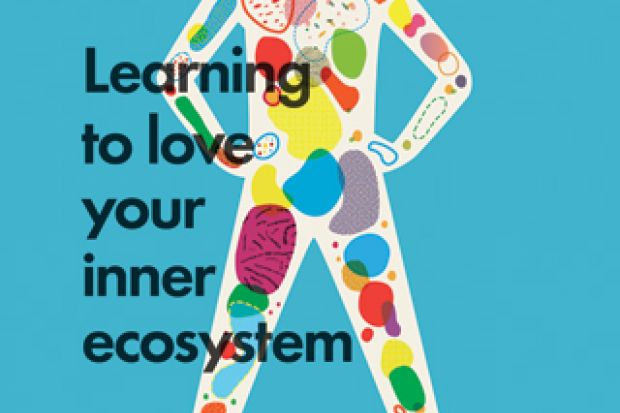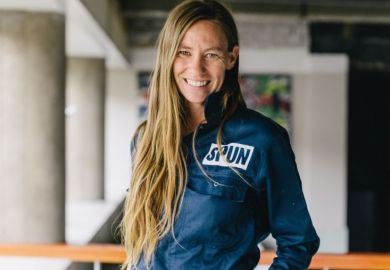“No man is an island,” wrote John Donne in 1634. “Der Mensch ist, was er ißt”, observed Ludwig Feuerbach in the 1860s: man is what he eats. Neither thinker could have begun to imagine the wonders Jon Turney presents in his terrific romp through our non-human inhabitants in I, Superorganism. His brief, however, is not the expected look at the life-threatening bugs that cause disease. Instead, he focuses on the normally life-enhancing bacteria (and their viruses) that make up our microbiome: hence this book’s subtitle.
In any new discovery about the micro world, the numbers are staggering. They are also scientific guesstimates. Turney cites a figure of 37 trillion cells in the tissues of our own body, and 100 trillion bacteria. We have 24,000 genes in our cells. The total gene count of the bacteria we host is 10 million and rising. It is one of the hallmarks of his writing that Turney’s sources are impressively up to date, yet throughout the book he reminds us that this new view of the body is not the last word, but merely a work in progress. An academic who is a science writer rather than a scientist, he has no vested interest in any one theory, although he has his favourites. Nor must he look ahead to securing the next research grant, which might need to be justified by overstating his case. There are cautionary extrapolations here, not giant leaps from germ-free, experimentally manipulated mouse to man. What Turney does convey brilliantly is the excitement in these laboratories and what their work might mean for us.
Despite the inevitable estimates and contingencies, there are enough hard facts and distilled interpretations here for us to begin to understand that we are indeed an island (or perhaps part of an archipelago). We host, and more fundamentally interact with, a wide-ranging population of bacteria. We don’t all have the same profile of bacterial species, although we share what they do in terms of gene functions. They are found on and in us in microorganism-rich landscapes: the skin, mouth, respiratory tract, vagina or penis, and most importantly, with by far the greatest number of inhabitants, the gut. Much of this is older science, although some of the details Turney provides about how deep in the dermis bacteria live are startling. What’s very new is how these organisms live with us, responding to what we eat, where and with whom we live, whether we have a dog (cats apparently don’t have the same effects), take antibiotics, are otherwise healthy, stressed or diseased. These organisms are not just passive responders. They have evolved with us and may actually drive processes in the body by assisting in the breakdown of foodstuffs that we cannot – for their own ends, of course, as they feed and reproduce – and liberating certain molecules that have far-reaching effects.
Turney considers the molecule butyrate, a short-chain fatty acid produced from the complex carbohydrates in the fibre we eat (or should do) but cannot digest without bacterial enzymes to break it down. He imagines its colonic journey. Not only does it feed the cells of the rapidly dividing epithelial gut lining, but also binds to a whole series of receptors on these cells that do things like calming inflammation. Attached to different receptors and taken within the cells, butyrate may play a role in damping enzymes connected with colon cancers, or interact with immune system cells in a positive way. These are but a few examples of the potential value of just one molecule.
Inviting us to consider what a scaled-up version of this “molecular chatter” might mean, Turney wants us to see our microbiome as engaged in a series of overlapping conversations involving the body’s four “information and control” systems – the genome, endocrine, brain/nervous systems and especially the immune system. In this new vision of the body, the tools necessary to continue to unpack it are the cutting-edge sequencing and computing technologies of bioinformatics that are yielding huge amounts of data. But Turney is a master at knowing when to stop, and when readers might be reaching overload and ready to move on to the next part of the story. After reading I, Superorganism, I cannot wait until he tells us that story, too.
I, Superorganism: Learning to Love Your Inner Ecosystem
By Jon Turney
Icon, 320pp, £12.99 and £9.99
ISBN 9781848318229 and 8236 (e-book)
Published 19 February 2015
Register to continue
Why register?
- Registration is free and only takes a moment
- Once registered, you can read 3 articles a month
- Sign up for our newsletter
Subscribe
Or subscribe for unlimited access to:
- Unlimited access to news, views, insights & reviews
- Digital editions
- Digital access to THE’s university and college rankings analysis
Already registered or a current subscriber? Login





